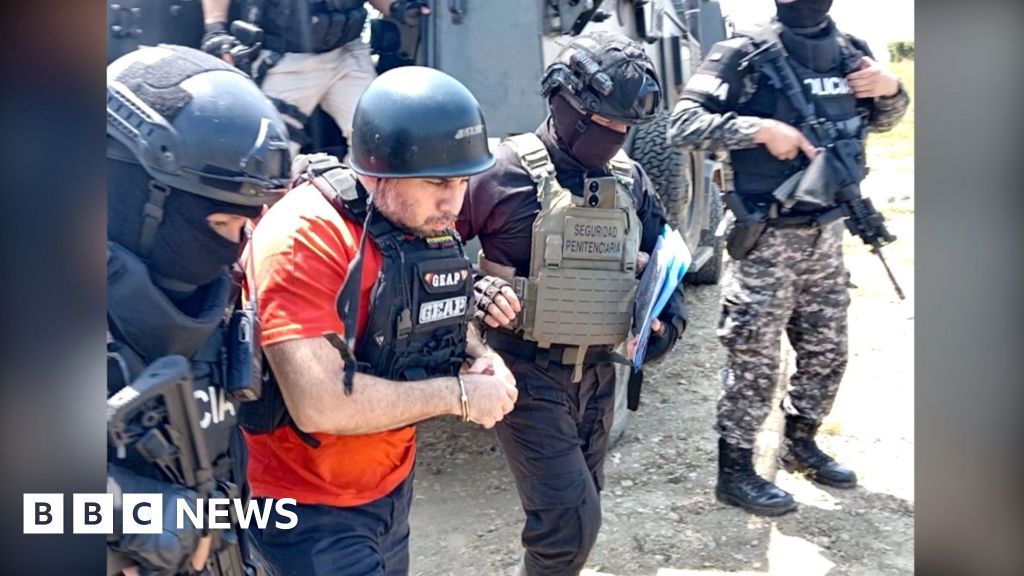In the wake of the US dropping 14 so-called ‘bunker buster’ bombs on nuclear production sites in Iran on Monday, questions remain over how successfully the operation achieved its aims of destroying Iran’s nuclear programme.
US President Donald Trump said the strikes "obliterated” Tehran’s major nuclear sites in Fordow, Natanz and Isfahan, with Israel claiming the strikes set back Iran's nuclear programme by “many years”.
But a preliminary US intelligence report leaked on Tuesday said the strikes did significant damage, rather than causing complete destruction, echoing a statement from the head of the International Atomic Energy Agency (IAEA) describing “extensive damage” at multiple sites in Iran.
As Iranian lawmakers voted on Wednesday to suspend all cooperation with the IAEA, the nuclear watchdog has not been able to carry out any inspections since the strikes. There remains an unanswered question over whether the attacks destroyed Tehran’s 408.6 kilo reserve of enriched uranium – an essential component if it plans to produce nuclear weapons.
408.6 kilos of enriched uranium
Iran's uranium stockpile is enriched to 60 percent purity, putting it well within reach of the 90 percent purity required for use in nuclear weapons.
“Going from natural uranium to 60 percent takes considerable time and effort,” says Ludovica Castelli, specialist in nuclear development in the Middle East at Italian thinktank, Istituto Affari Internazionali (IAI). “But once you're at 60 percent, the final step to 90 percent is much quicker. Experts estimate it could take just five or six days to enrich enough material for one nuclear weapon, if that political decision were made.”
Before the war, experts believe the stockpile was mainly stored in two places: underground tunnels at a facility in Isfahan, and in a heavily fortified underground enrichment site in Fordow.

Destroying these reserves would constitute a huge set back to Iran’s nuclear ambitions. But while satellite images have shown destruction above ground, the two facilities are “heavily fortified, and despite multiple Israeli and US attacks, there’s no indication that those tunnels or the material inside were targeted,” Castelli says.
There is also the possibility that Iran protected its stockpile by moving reserves to hidden storage sites prior to the attacks, as threatened by Foreign Minister Abbas Araghchi.
Initial US and European intelligence suggests this is likely to have happened.
“That raises serious concerns, because if the material is now stored across undisclosed sites, it becomes extremely difficult to monitor, let alone verify, under international safeguards,” Castelli says.
Satellite imagery shows trucks and bulldozers at the Fordow site beginning June 19, three days before the US struck, which may have been used to move the uranium – or not.
Subsequent satellite imagery “revealed that the tunnel entrances into the underground complex had been sealed off with dirt prior to the US airstrikes,” Stephen Wood, senior director at American satellite imagery and analysis firm Maxar Technologies told AP. “We believe that some of the trucks seen on 19 June were carrying dirt to be used as part of that operation.”
To display this content from YouTube, you must enable advertisement tracking and audience measurement.
One of your browser extensions seems to be blocking the video player from loading. To watch this content, you may need to disable it on this site.

08:05
Nine nuclear bombs
Iran’s supplies of enriched uranium could be converted into enough weapons-grade uranium to make about nine nuclear bombs at a site like Fordow, Castelli says.
However, the uranium “is not going to enrich itself, and Natanz and Fordow are really badly damaged,” cautions Hans-Jakob Schindler, a former German diplomat in Tehran who today directs the Counter Extremism Project NGO.
The centrifuges used to enrich uranium at Fordow are “no longer operational,” the IAEA director Rafael Grossi told Radio France Internationale on Thursday.
But it seems likely that Iran still has enrichment capacity at other sites including what Castelli describes as a “significant underground complex” close to Natanz that is thought to hold high-strength rotors for centrifuges.
If large sections of Tehran’s nuclear infrastructure survived the attacks, “the big question is, if Iran did move some of its 60 percent enriched uranium, in what time frame are they going to be able to enrich that to 90 percent and then build a bomb?” asks Schindler.
Before the start of the Israel-Iran conflict, experts estimated that it would take Iran three weeks to enrich its uranium to 90 percent and then produce nine nuclear weapons.
But such estimates could be a best-case scenario for Tehran as material such as centrifuges are sensitive and must work in tandem to more quickly enrich uranium. “They work in cascades so if one centrifuge fails, the entire cascade fails,” says Schindler.
‘You can’t bomb knowledge’
Israeli officials said that on June 23 that its military carried out additional strikes around Fordow in order to damage access routes and prevent the Iranians from transporting materials needed to pursue their nuclear plans elsewhere.
Although Israel and Iran have now agreed to a ceasefire, proposed by Trump, moving uranium out of hiding – if there is any – will not be an easy task.
“If it’s in the form of uranium hexafluoride gas, which is what’s used in centrifuges, it has to be stored in special high-pressure cylinders,” Castelli says. “This gas is chemically toxic and highly reactive, particularly with water. If there’s a leak during transport, there could be a chemical hazard.”
The chemical is easier to handle when converted to solid form, such as a powder, but still requires steps to reduce contamination and exposure. Castelli says, “moving it safely would require specialized equipment”.
There is also the risk that such activity would be picked up by US or Israeli surveillance – meaning that Tehran may, for now, prefer to leave any hidden supplies where they are.
The US, Israel and the IAEA all agree that strikes on Iran have set back its nuclear programme, but it remains unclear by how much. “You just don't know how extensive the damage is. You could argue maybe it's several years”, Schindler says.
US intelligence has estimated Tehran’s plans have been set back only a few months, although the White House rejected this assessment.
Even then, the main damage is operational and Iran has the know-how to recoup what it has lost. As former US secretary of state Colin L. Powell once remarked, “you can’t bomb knowledge”.
With time, financial investment and willpower, Tehran could rebuild infrastructure to pursue its nuclear programme, buoyed by its possible stash of enriched uranium. Despite 12 days of US and Israeli strikes on Iran, “there are still engineers. There are more scientists than those that were killed", says Schindler.
That is one of the most compelling arguments against the US-Israeli attacks, the expert says.
Without significant political change and regional integration of Iran, Schindler says two outcomes are likely: “The next person in power is going to build a nuclear bomb, and they're not going to do that with IAEA inspections. So, [the West] is going to have to attack Iran again, and they may not know as much about the nuclear programme as they did this time. They will be taking an ever-increasing risk.”
This article was adapted by Joanna York. Click here to read the original in French.











 English (US) ·
English (US) ·